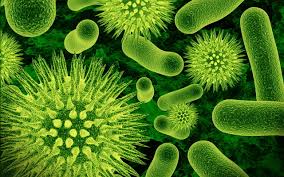A fungus (/ˈfʌŋɡəs/; plural: fungi[3] or funguses[4]) is any member of a large group of eukaryotic organisms that includes microorganisms such as yeasts and molds (British English: moulds), as well as the more familiar mushrooms. These organisms are classified as a kingdom, Fungi, which is separate from plants, animals, protists, and bacteria. One major difference is that fungal cells have cell walls that contain chitin, unlike the cell walls of plants and some protists, which contain cellulose, and unlike the cell walls of bacteria. These and other differences show that the fungi form a single group of related organisms, named the Eumycota (true fungi or Eumycetes)



